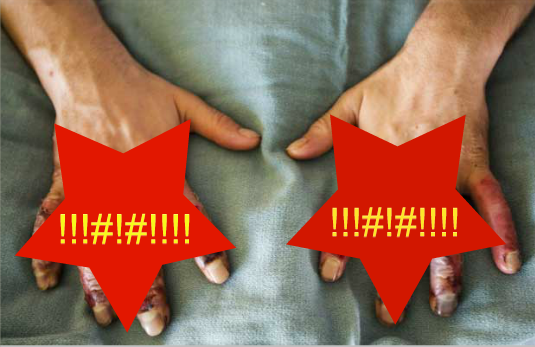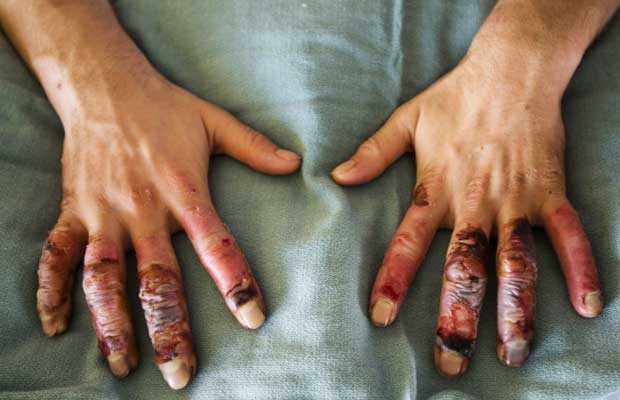In a survival or bug-out situation, being protected from the elements is key to your survival.
One danger prolonged exposure to cold poses is frostbite; here are the basic symptoms and phases of frostbite to be aware of if you are caught in a cold weather situation without adequate protection.
What are the symptoms of Frostbite?
Frostbite is most common on the extremities or any typically unexposed areas of skin. Fingers, toes, nose, ears, cheeks or your chin are where you are most likely to get frostbite because when you are cold, the blood in your body retreats towards the core to keep the vital organs functioning and warm. Severe frostbite requires medical attention because it can literally destroy skin, tissues, even muscle and bones.
How to tell if you have frostbite
The symptoms of frostbite include the following:
• Initially cold skin and a prickling or tingling feeling. This can be felt in early, less severe forms and most of us have been so cold that we felt numb before.
• Numbness
• Discolored skin. It could be red, white, even blue or grey.
• Hard or waxy looking skin
• You could experience clumsiness or disorientation due to muscle and joint stiffness.
• Blistering after your skin rewarms. This is a serious sign of frostbite.
Frostbite generally occurs in several stages and takes time depending on the temperature and your exposure to the cold.
Frostnip – Frostnip is the first stage of frostbite and is what most of us who have lived for any amount of time and been outdoors have experienced. With frostnip, you skin turns red and feels obviously very cold. Your skin could also become paler as in your fingertips which will lead to prickly feelings and numbness. When you begin to warm up you may feel pain but this passes and frostnip does not cause any permanent damage and is usually remedied with some warmer temperature and a nice mug of cocoa.
Superficial Frostbite – The second stage of frostbite is red skin that turns white or pale. As this happens, ice crystals may start to form in the tissue. There is no way you will know that this is happening of course and your skin may actually start to feel warm. If you get out of the cold at this point you may notice that your skin appears blue, purple or splotchy and will start to sting, burn and swell. Blisters may appear 24 to 36 hours later.
Severe Frostbite – The longer you are exposed to the cold, the effects of frostbite damage all layers of the skin including the tissues underneath. Numbness, loss of sensation including any pain or discomfort is a sign that your tissues have died essentially. Your joints or muscles may stop working and you will have large blisters form after you have warmed back up. This is the point that skin turns black, hard and you will start losing things that you used to have. This is not good and it’s very important to recognize the signs of frostbite early to prevent this from ever happening. You do not want to deal with any injuries during a grid down or bug out scenario, but frostbite could lead to worse problems. If you have signs of superficial or severe frostbite you should seek medical attention immediately.
The best way to avoid frostbite is to make sure you are adequately prepared for cold weather.
If you are going to be exposed to cold weather for a prolonged period, even your most insulated clothing offers little protection and if you do not have adequate protection, you must be alert for early symptoms of your skin freezing.
To learn more about frostbite, how to treat it and when to seek medical help, please visit The Prepper Journal.


I live in arizona this is useless lol